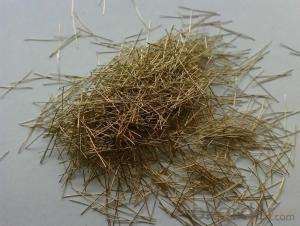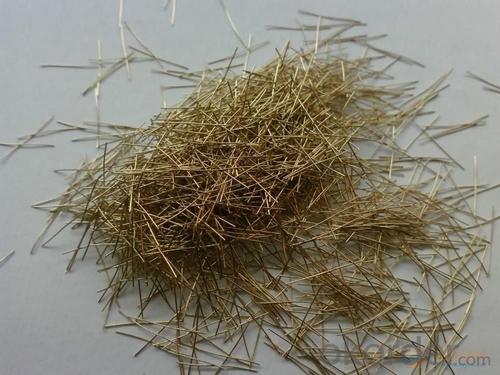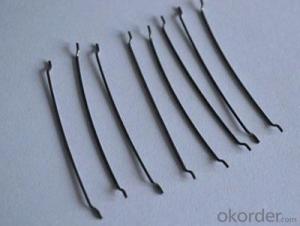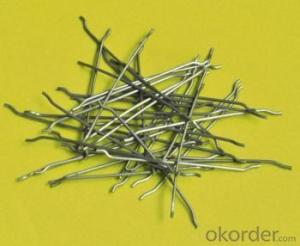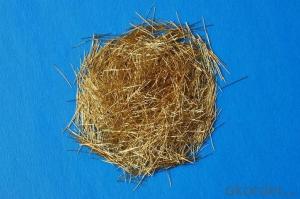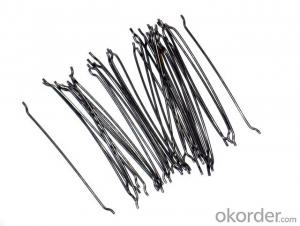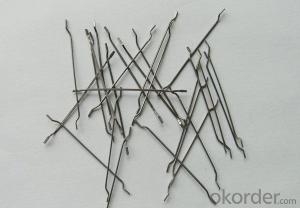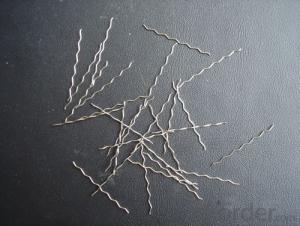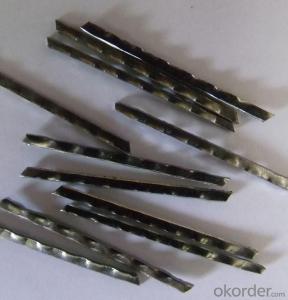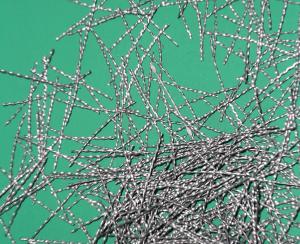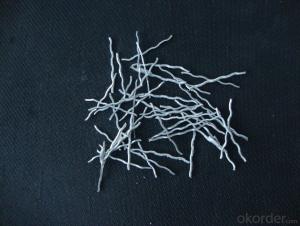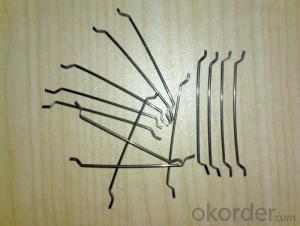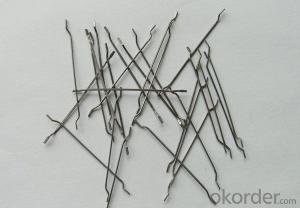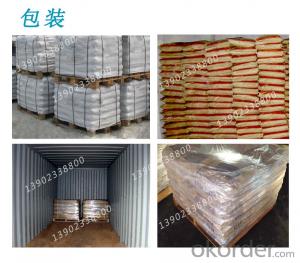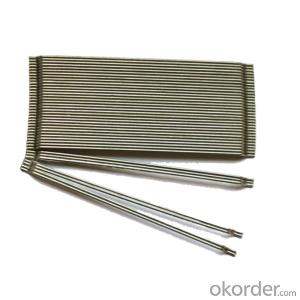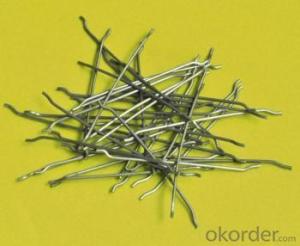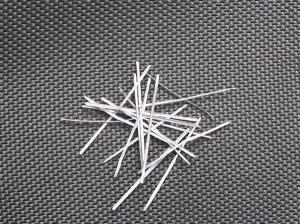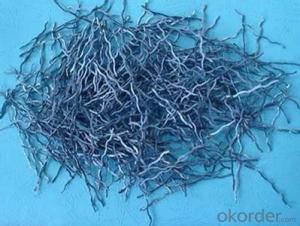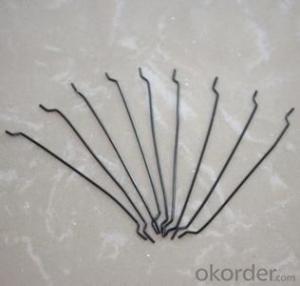Melt Extract Stainless Steel Fiber - Steel Fiber Copper Coated Company from China CNBM International
- Loading Port:
- Tianjin
- Payment Terms:
- TT OR LC
- Min Order Qty:
- 1000 kg
- Supply Capability:
- 30000 kg/month
OKorder Service Pledge
OKorder Financial Service
You Might Also Like
Quick Details
| Place of Origin: | Hebei, China (Mainland) | Brand Name: | cnbm | Model Number: | CW04 |
| Material: | Steel | Material:: | Steel,low carbon steel wire | Standard:: | ASTM ,ISO9001,CE |
| Shape:: | hooked ends and straight middle | Grade:: | Q195 | Application:: | shortcrete on tunnel, underground project, dam plate |
| Tensile strength:: | 2850Mpa | Demension:: | per your requirement | Place of Origin:: | HeBei China (Mainland) |
| Brand Name:: | ZhiTai steel fiber | Delivery Detail:: | in 7 days upon receive prepayment |
Specifications
Steel fiber for Concrete Reinforcement
1.High tensile strength 2.Length 6-10mm 3.Diameter 0.15-0.3mm
Copper coated steel fiber
1. diameter: 0.15-0.3mm
2. lengthe: 6-10mm
3. high tensile strength : 2850Mpa
4. It is widely used for concrete reinforcement.
Picture
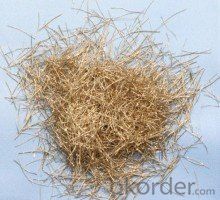
Steel fiber
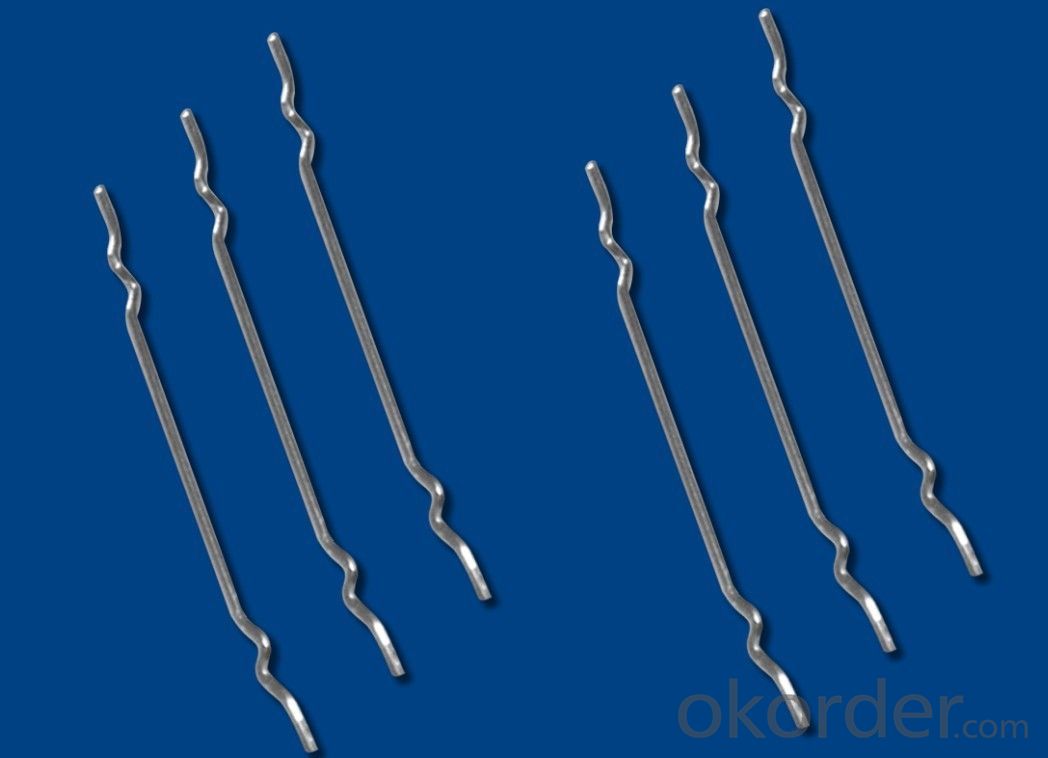

FAQ
certificated: ISO 9001
Technical advantages of Daye steel fiber:
A. Improve mechanical performance of concrete
B. Provide uniform distribution throughout concrete with excellent mixing
C. No balling or caking by adopt correct mixing method
D. Reduce concrete volume
E.Save construction time and cost
F.Reduce excavation volume
G.Available for jointless floor.
- Q: What is the effect of melt extract stainless steel fiber on the thermal expansion of concrete?
- The addition of melt extract stainless steel fiber to concrete can effectively reduce its thermal expansion. The fibers act as reinforcement within the concrete matrix, helping to distribute and dissipate the heat generated during temperature changes. This results in a more controlled and limited expansion of the concrete, minimizing the risk of cracking or structural damage due to thermal stresses.
- Q: How does melt extract stainless steel fiber improve the impact resistance of concrete?
- Melt extract stainless steel fiber improves the impact resistance of concrete by providing additional reinforcement within the concrete matrix. These fibers are mixed into the concrete mixture and help to distribute and dissipate the force applied during impacts, thereby enhancing the concrete's ability to withstand and absorb impact energy without cracking or breaking. The presence of stainless steel fibers also helps to increase the overall toughness and durability of the concrete, making it more resistant to impact damage.
- Q: Can melt extract stainless steel fiber be used in high-strength shotcrete applications?
- Yes, melt extract stainless steel fiber can be used in high-strength shotcrete applications. This type of fiber provides enhanced strength and durability to the shotcrete, making it suitable for demanding applications that require high-strength materials.
- Q: Can melt extract stainless steel fiber be used in high-temperature environments?
- Yes, melt extract stainless steel fiber can be used in high-temperature environments. Stainless steel is known for its excellent heat resistance properties, making it suitable for applications where high temperatures are involved. Melt extract stainless steel fibers are typically made from a high-grade stainless steel alloy, which provides enhanced resistance to oxidation and corrosion at elevated temperatures. These fibers can withstand temperatures up to 1200°C (2192°F) without losing their structural integrity. Therefore, they are commonly used in industries such as aerospace, automotive, and refractories, where high-temperature environments are prevalent.
- Q: Can melt extract stainless steel fiber be used in tunnel construction?
- Melt extract stainless steel fiber is indeed applicable to tunnel construction. Renowned for their exceptional tensile strength, resistance to corrosion, and long-lasting nature, stainless steel fibers are perfectly suited for endeavors that demand structural integrity, like tunnel construction. These fibers have the ability to enhance the mechanical attributes of concrete, thereby bolstering its ability to withstand cracking, thermal expansion, and shrinkage. Moreover, they can serve as reinforcement within tunnel linings, thereby reducing the necessity for conventional reinforcement techniques like rebar. This leads to considerable cost savings and quicker completion times. All in all, melt extract stainless steel fiber is a trustworthy and efficient option when it comes to tunnel construction projects.
- Q: How does melt extract stainless steel fiber affect the resistance of concrete to sulfate attack?
- Melt extract stainless steel fiber has a positive impact on the resistance of concrete to sulfate attack. Sulfate attack occurs when sulfate ions present in soil or water react with certain compounds in concrete, leading to the formation of expansive products that can cause concrete deterioration. Stainless steel fibers, when added to concrete, act as a reinforcement material that enhances its overall durability and resistance to various forms of degradation, including sulfate attack. The presence of these fibers helps to improve the concrete's ability to resist the penetration of sulfate ions and minimize the formation of harmful expansive products. The melt extraction process used to produce stainless steel fibers ensures a high level of purity and a uniform distribution within the concrete matrix. This results in improved bonding between the fibers and the surrounding concrete, creating a stronger and more resistant material. Furthermore, the corrosion-resistant properties of stainless steel fibers make them particularly effective in preventing concrete deterioration caused by sulfate attack. Unlike other types of fibers, stainless steel fibers do not corrode when exposed to sulfate ions. This corrosion resistance helps to maintain the integrity of the concrete and prevents the formation of cracks or other forms of damage that can occur due to the expansion of sulfate products. In conclusion, the addition of melt extract stainless steel fiber to concrete enhances its resistance to sulfate attack by improving its ability to withstand the penetration of sulfate ions and minimizing the formation of expansive products. The corrosion-resistant properties of stainless steel fibers further contribute to the long-term durability and performance of concrete in sulfate-rich environments.
- Q: What is the lifespan of melt extract stainless steel fiber in concrete structures?
- The lifespan of melt extract stainless steel fiber in concrete structures can vary depending on several factors. Firstly, the quality of the stainless steel fiber used plays a crucial role in determining its lifespan. High-quality melt extract stainless steel fibers are typically more resistant to corrosion and can withstand harsh environmental conditions, resulting in a longer lifespan. Secondly, the exposure conditions of the concrete structure also affect the durability of the stainless steel fiber. Concrete structures exposed to aggressive environments such as marine or industrial areas with high chloride or chemical content may experience accelerated corrosion, which can reduce the lifespan of the stainless steel fiber. Additionally, the design and construction practices of the concrete structure can impact the performance and longevity of the stainless steel fiber. Proper installation techniques, including correct fiber distribution and embedding, help ensure the fiber's optimal performance and durability over time. In general, if the stainless steel fiber is of high quality and the concrete structure is properly designed and constructed, melt extract stainless steel fiber can have a lifespan ranging from 30 to 50 years or more. However, it is essential to regularly inspect and maintain the concrete structure to identify any potential issues or signs of deterioration that may impact the lifespan of the stainless steel fiber.
- Q: What is the effect of melt extract stainless steel fiber on the toughness of concrete?
- The addition of melt extract stainless steel fiber to concrete can have a positive effect on its toughness. Stainless steel fibers are typically used as reinforcement in concrete to enhance its mechanical properties, including toughness. When incorporated into concrete, these fibers act as tiny reinforcements, helping to distribute stress and prevent cracking. This reinforcement improves the overall toughness of the concrete, making it more resistant to impacts, vibrations, and other external forces. The melt extract stainless steel fibers are particularly effective in enhancing toughness due to their superior strength and durability. They are resistant to corrosion, which ensures their long-term effectiveness in concrete structures. Additionally, their small size and high aspect ratio allow for a better bond between the fibers and the surrounding matrix, further improving the overall toughness of the concrete. Overall, the addition of melt extract stainless steel fiber to concrete leads to an increase in its toughness, making it more resilient and durable. This can be particularly beneficial in applications where concrete is subjected to heavy loads, dynamic forces, or harsh environmental conditions.
- Q: How does melt extract stainless steel fiber improve impact resistance in concrete?
- The impact resistance of concrete is enhanced by melt extract stainless steel fiber, as it reinforces the concrete and improves its structural integrity. During the mixing process, the fibers are dispersed throughout the concrete matrix, creating a reinforcement system in the form of a three-dimensional network. When a load or impact is applied to the concrete, the stainless steel fibers help distribute the stress and absorb the energy. This action prevents cracks from propagating and reduces the chances of concrete failure. The fibers function as miniature reinforcement bars, enhancing the concrete's tensile strength and ductility. Additionally, the melt extract stainless steel fibers have a high aspect ratio, which means they are long and thin. This attribute further enhances their effectiveness in impact resistance. The fibers can bridge and connect cracks in the concrete, inhibiting their growth and preventing further damage. The impact resistance properties of the stainless steel fibers are also attributed to the stainless steel material itself. Stainless steel is renowned for its strength and durability, making it an excellent choice for reinforcing concrete. It also has exceptional corrosion resistance, ensuring the long-term performance and durability of the concrete structure. In summary, melt extract stainless steel fiber improves the impact resistance of concrete by providing additional reinforcement, distributing stress, absorbing energy, preventing crack propagation, enhancing tensile strength, and bridging cracks. Its high aspect ratio and corrosion-resistant properties further contribute to its effectiveness in enhancing the overall impact resistance of concrete structures.
- Q: Can melt extract stainless steel fiber be used in architectural shotcrete applications?
- Yes, melt extract stainless steel fiber can be used in architectural shotcrete applications. Stainless steel fibers are commonly added to shotcrete mixes to improve the tensile strength, ductility, and durability of the final concrete structure. The melt extract stainless steel fibers are specifically designed for shotcrete applications and can effectively enhance the performance of the shotcrete, making it suitable for architectural projects. The addition of stainless steel fibers in shotcrete can provide crack control, increase resistance to impact and abrasion, improve durability, and enhance the overall structural integrity of the shotcrete. This is especially important in architectural applications where aesthetic appeal and long-term performance are crucial. Furthermore, melt extract stainless steel fibers offer a high aspect ratio, which means they have a long length compared to their diameter. This feature allows for better dispersion and bonding within the concrete matrix, resulting in improved crack resistance and overall structural stability. In summary, melt extract stainless steel fibers can be successfully utilized in architectural shotcrete applications. Their addition can enhance the strength, durability, and overall performance of the shotcrete, making it a suitable choice for a wide range of architectural projects.
Send your message to us
Melt Extract Stainless Steel Fiber - Steel Fiber Copper Coated Company from China CNBM International
- Loading Port:
- Tianjin
- Payment Terms:
- TT OR LC
- Min Order Qty:
- 1000 kg
- Supply Capability:
- 30000 kg/month
OKorder Service Pledge
OKorder Financial Service
Similar products
Hot products
Hot Searches
Related keywords
